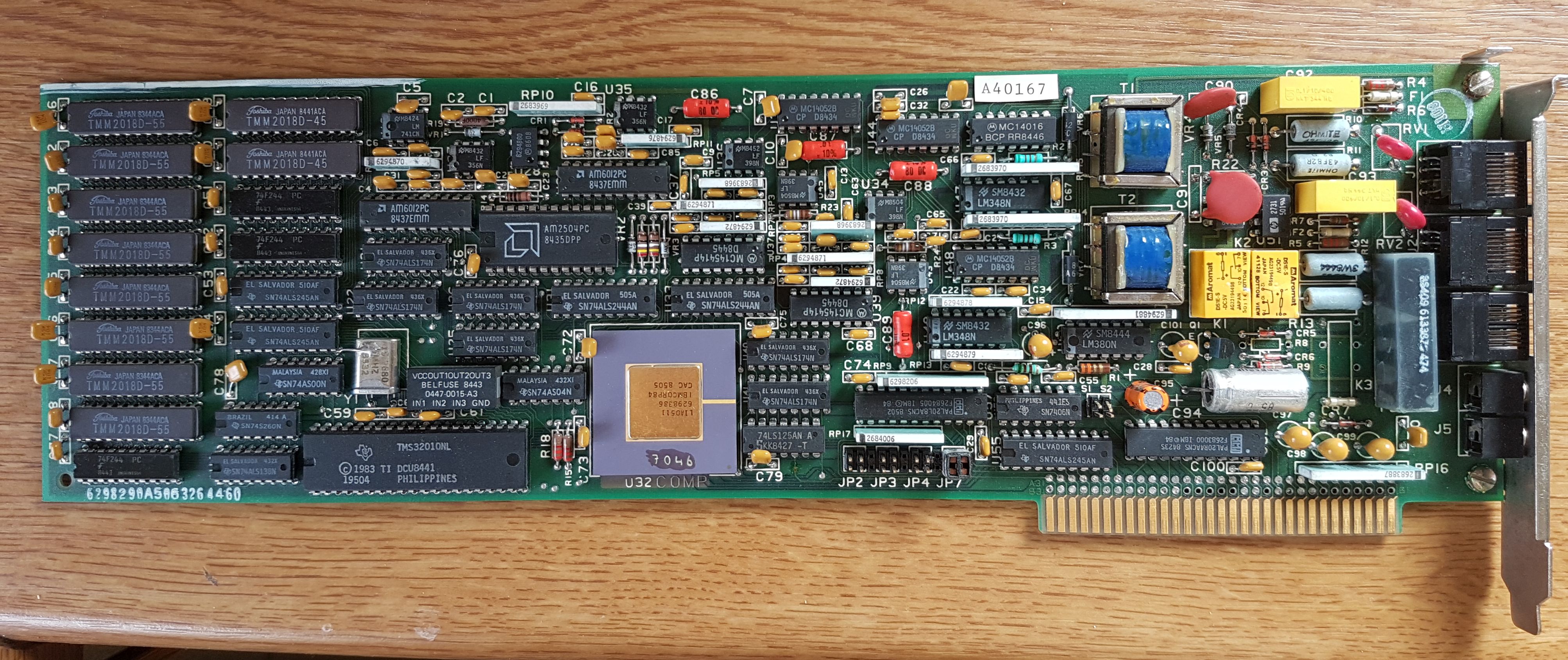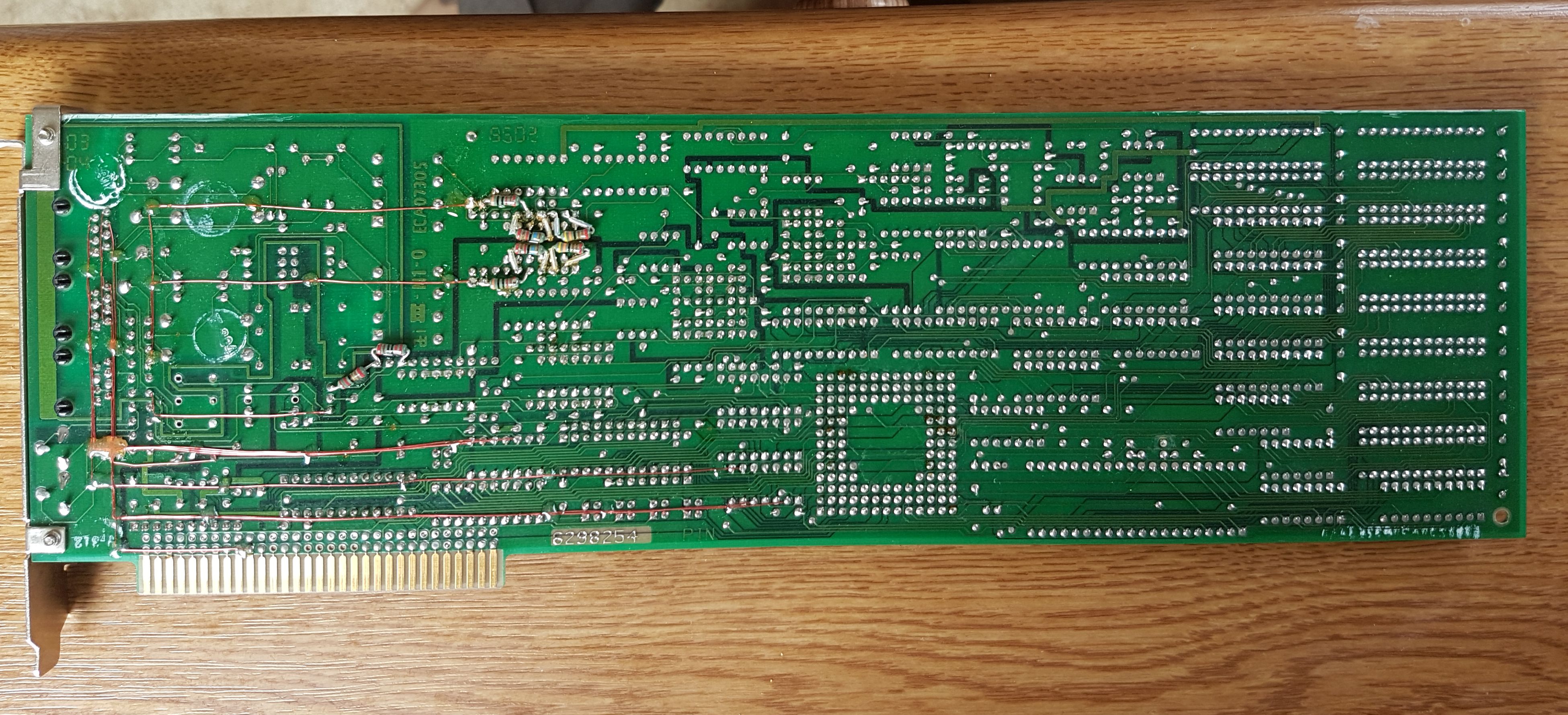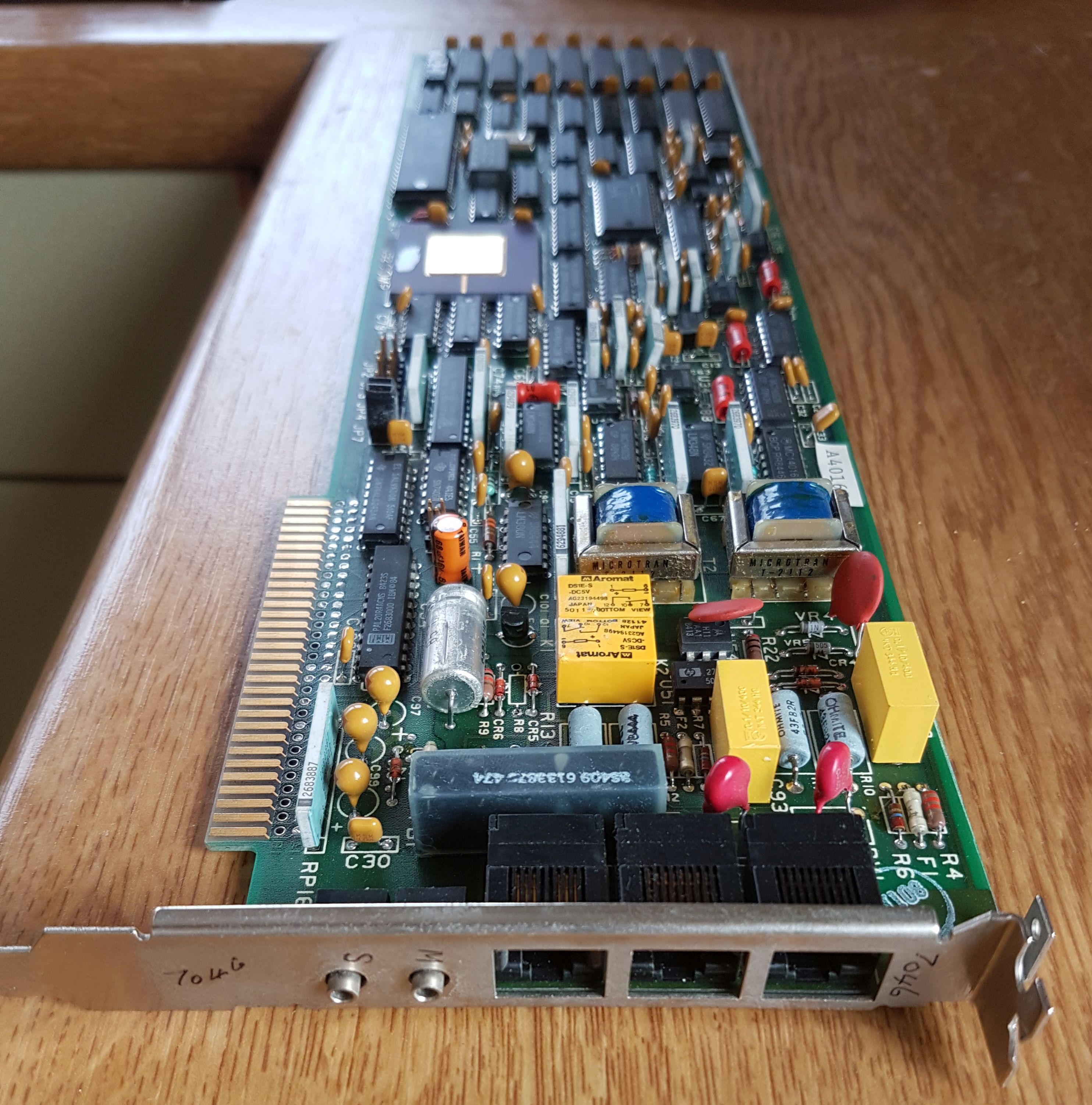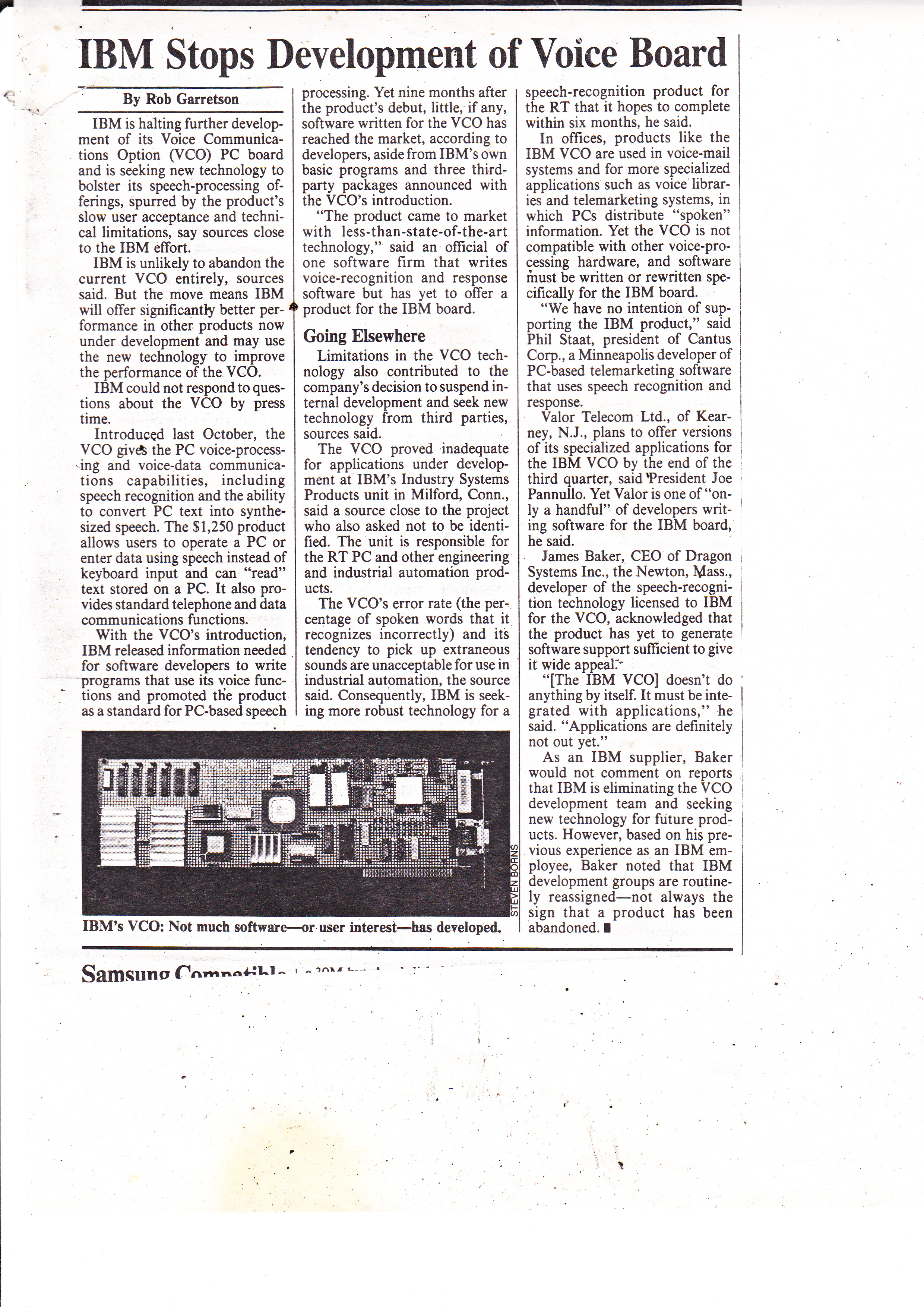Summary of the VCO Announcement in the US October 1985
The IBM Personal Computer Voice Communications Option is a multifunction adapter card that may be installed in an IBM Personal Computer, IBM Personal Computer XT"" system, or an IBM Personal Computer AT@ system.
W'hen this option is installed, the IBM Personal Computer is extended to provide
- voice command recognition,
- synthetic voice (text-tospeech)
- voice (audio) record/playback,
- line monitoring,
- telephone management,
- and an internal modem (Bell l03l2l2A standards).
Voice Recognition
is based on speaker-dependent,
discrete-utterance recognition (words
and/or phrases). A speaker may train
one or more vocabularies to be shared
by speech-based applications.
Use voice as input for data entry or
commands through a connected
microphone or telephone.
Text-to-Speech (Synthetic Voice) -
Any serial ASCII data stream directed
to the Voice Communication Text-to-
Speech component will be transformed
into synthetic voice (speech).
Reads text
and data through a connected telephone,
telephone line, or speaker
Rules
provide for abbreviations, acronyms,
and other variances. For example, in
"Dr. Jekyl" and "Sunset Dr.," Doctor
and Drive will be spoken, respectively.
' Voice (Audio) Record/Playback -The Operating Subsystem digitizes voice and mathematically compresses it. Three compression options are provided to meet differing voice quality and storage requirements. Periods of silence in speech are compressed and will require less storage
. Line Monitoring-Applications can be written to receive touch-tone signals from remote telephones to be used as commands or data entry.
Detects and/or generates touch.tone signals. Detection allows remote keyboard entry. Generation allows autodialing. . Generates pulse dial tones to allow autodialing on pulse phone systems . Detects call progress signals:
. Telephone Management - Applications can initiate telephone calls (autodial) and support other PBX functions (such as 'Adding a Party"), and can receive telephone calls by taking advantage of the telephone management component of the Voice Communications Application Program Interface.
Technical Information
The adapter contains the following
major functional components:
Texas Instruments TMS320
programmable signal processor.
20KB of RAM
Interrupt level iumper for levels 2, 3,
4, and 7
Connectors for attachment of one telephone set
and one or two telephone lines
Special telephone cables included.
Cables use RJl1C connectors to connect
to modular telephone wall outlets and
telephones.
Sub-miniature audio-rype connectors
for attachment of microphone and an
external speaker
.........
Further Information
VCOcardHursleyprototypeforEMEA
 .
. |
VCOcardHursleyprototypeforEMEA the reverse

|
VCOcardHursleyprototypeforEMEA end-on view
 .
. |
VCOcardHursleyprototypeforEMEA detail
|
|
To see the Flyer for the US VCO: click for PDF file
|
To see the VCO Subsystem Flyer: click for PDF file
|
|
To see the Flyer for the VoiceKeyboardIflyer: click for PDF file
|
To see the VoiceAPIflyer click for PDF file
|
|
To see the AugmentedPhoneIflyer click for PDF file
|
To see the IBMPersonalTelephoneManagerflyer: click for PDF file
|
|
To see theIBMVoicePhoneAssistantflyer click for PDF file
|
To see the VCO product announcement USA 185-128 15th Oct 1985 click for PDF file
|
Conversion for EMEA
Why was it so hard to produce a version, or versions, for the main EMEA market.
A number of readers wiil immeadialey know the answer to that -'Homologation!
All the national telecommunications authorities had their own, very strict, rules about what could be connected to their networks. Voltages, current tolerances, signal formats, safety measures and so on. Gaining 'Type Approval for a product was a really major hurdle.
The VCO was not designed with any thought to non-US Approvals requirements, or to the characteristics of non-US telephone systems.
Hursley was brought in to try to produce solutions for non-US markets. We did a lot of work on redesigning the product for sale in Europe.
The solution needed so much extra circuitry, relays, sockets etc that there was no room to add it to the adaptor card. The extra hardware had to go in a new box that had to sit outside the PC (hanging on the back). Not elegant. And costly.
We also had to cripple some of the functions
- eg the software modem couldn't be used - and rework some
of the applications functions. (note - also the card was based on a Texas 'Digital Signal Processing' CPU -- and DSP-skilled programmers were rare )
The expense of all this meant the business case for
European announcement was impossible
Failure Reasons
20/20 hindsight there were a variety of factors. The following
are my personal views of some of the reasons.
- TOO MANY FUNCTIONS - strangety it was probably too rich a product The people who wanted local voice recognition didn't want telephony, the people who wanted an answering machine didn't want TTS, etc, There wasn't one unique selling proposition,.
- BENEFITS - it was a comprehensive product, with a number of uses. But the benefits in any one use were not often tangible. A clever voice mail application on your PC wasn'.t clearly a better bet than a cheapanswering machine. Voice input to your PC didn,t really show any good dollar saving .
- MARKETING - lt was just another adaptor card. ln the nature of adaptor cards it was just thrown over the wall onto the dealers' shelves. They didn't have time to understand it. lt was too small and complex (relatively) for the IBM salesman. There was, I think, one advertisement run for it.
|
To read a view of why VCO died see article some years later in IBM 'CATS' newsletter click for PDF file
|
To see a US Journal item on the end of VCO 1986 click on image
|
Event Happenings Oops!
All this functionality was pretty novel back in those days. I used to do a lot of customer executive seminars, trying to get people to think about the potential of these technologies.
Demonstrating "Text-To-Speech" (TTS) was obviously an interesting part of this.
The quality of the speech produced was of course not that great (think very very early 'Stephen Hawking'). My standard joke was that it "sounded like a drunken Swede".
At one customer session two guys in the front row did not look very happy atall.. I asked their IBM rep afterwards why this was. He explain that
- They were Swedish
- They had indeed had ' a very good lunch' before the session…
As part of the TTS demonstrations it was my habit to get one or two of the audience to come out front and key in a senence or two of their choice..
Typically it was something simple like "Dr. Smith will see you now.".
However one customer from Wales thought up something more challenging.
"The next train will call at Llanfairpwllgwyngyllgogerychwyrndrobwllllantysiliogogogoch ". (a station in Wales famous as the second longest official one-word place name)
This was a bit of a challenge! Especially to a very US-origin bit of software.....
